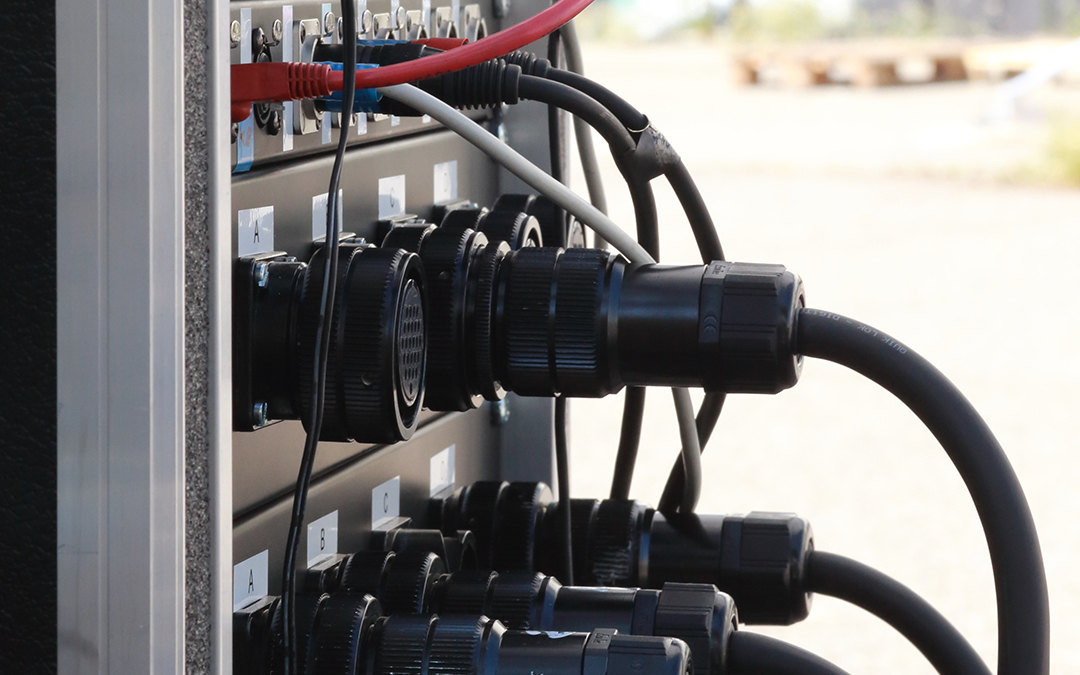Amps, Watts, and Volts: What’s the Difference?

READ TIME: 3 minutes
We’re hosting an event in a beautiful, but old, landmark building, and one of my vendors suggested we make sure the venue has enough electrical. How can I figure out how much electrical power we’ll need? And what’s the difference between amps, watts, and volts?
Power 101
This is actually not complicated to answer. Power requirements are determined using three elements:
Watts
Watts measure the amount of energy a device uses. If you’ve switched to LED bulbs in your home recently, you may have noticed that the LED replacement for the old 60 watt incandescent bulb now only uses 10 or 11 watts of energy to produce the same light output. (Light output is measured in lumens, but that’s for another post.)
- Whose responsibility is this? Knowing how many watts your various vendors will need is something you can tell the venue.
Amps
Amps measure the amount of electricity an electrical circuit can deliver. Just because you see an empty wall socket doesn’t mean the circuit can support your device. It depends on how many amps that circuit can handle. Too many devices (or a few high use devices: hairdryers, anyone?) will cause the circuit to overload and shut down.
- Whose responsibility is this? Knowing how many amps are on a circuit, and where the outlets on that circuit are, is something the venue can tell you and your vendors. If you’re getting additional power lines run for your event needs, exhibitors, etc. the venue should specify how many amps that circuit will be, and how many total watts it can accommodate.
- Bonus credit for science geeks: To determine the amount of watts available on a given circuit multiply amps x volts. [Amps x Volts = Watts], so a 10 amp circuit at the standard US 110 volts equals 1100 total available watts that can be pulled from any combination of outlets on that circuit.
Volts
Volts are a measure of electrical pressure, or the speed with which the electricity is delivered.
- Whose responsibility is this? In most cases you won’t have to worry about this because it’s fixed. U.S. outlets are 110-120 Volts, and most European outlets are 230-240 Volts.
What Uses Power At Events?
Most modern events require electricity. To calculate the amount of electricity you’ll need, add up the wattage for every single device that plugs into an outlet. Here’s sample list of things you might encounter:
- Functional lighting (check-in table, auction items, product displays, etc.)
- Design lighting
- Audio (sound system for speakers, DJ, band, etc.)
- Display (projectors, monitors)
- Guest device charging strips
- Photo booths
- Laptops & printers (check-in, backstage)
- Light up furniture
- Catering equipment (e.g. coffee urns)
- Exhibitors
- Experiential activities
- Heating & ventilation (in tents)
Tips
- A rough estimate of your power requirements can help you determine whether the venue you’re considering is able to accommodate your event. Electricity can be a big line item on an event budget. It’s important to be able to estimate a cost you can’t do without.
- Many vendors often just plug their cords into the nearest outlet without consideration of how many amps that circuit can handle. Have the venue contact point out which outlets are on which circuits, and how many amps those circuits supply.
- Insure your vendors communicate with each other to avoid blowing a circuit during the event. It’s unlikely that you’ll have all power being used during rehearsals or set-ups, as vendors test their gear at different times.


